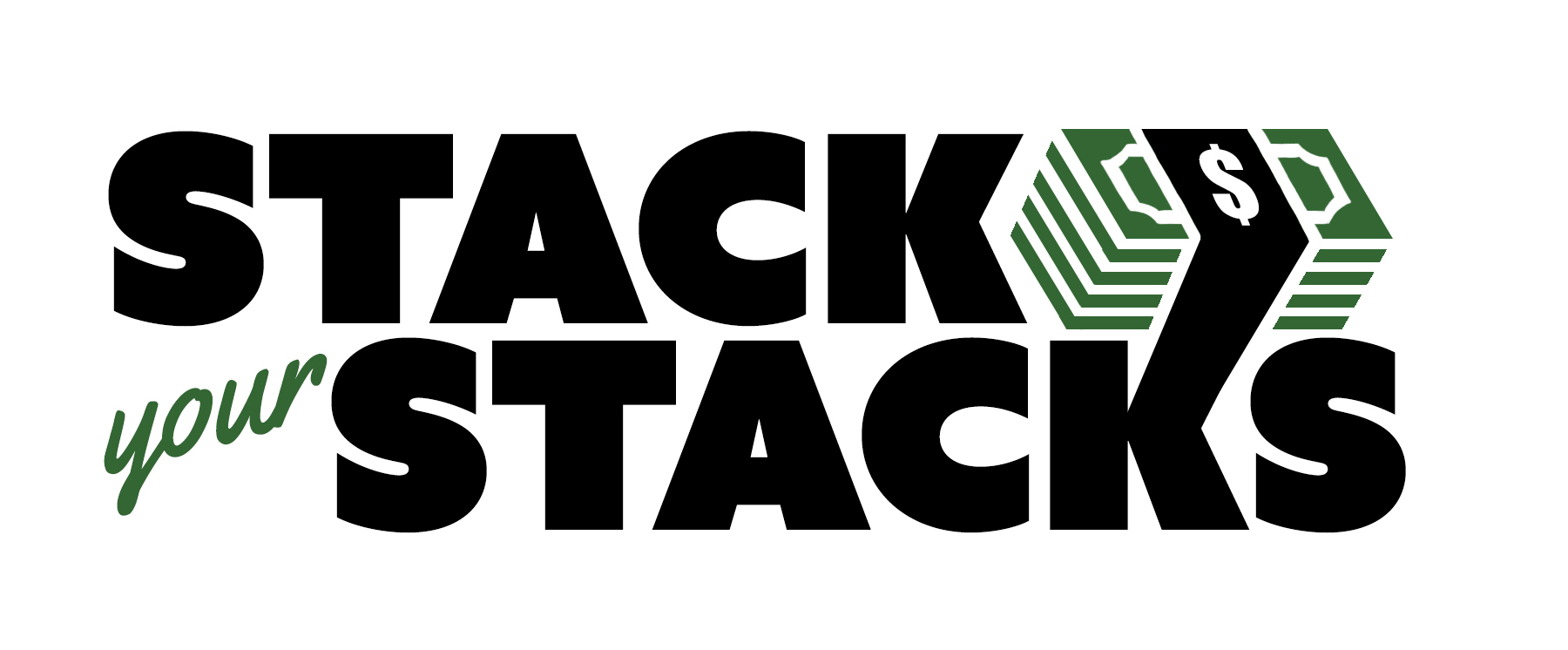How Much Money Should You Have After Paying Your Bills?
It’s the end of the month and you’re paying your bills – and somehow, there’s never enough left over for savings or fun. Sound familiar? It’s an all too common scenario these days, with 63% of the U.S. population living paycheck to paycheck, according to an article by CNBC. But how much money should you ideally have left after paying your pills?
There’s no one right answer to this question, but hopefully, we can break down some important considerations and help you on the path to having more money after your bills. (Or maybe even getting a month ahead on your bills to free up some stress!).
Disclaimer: This post is for educational purposes only and should not be construed as financial advice.

How Much Money Should You Be Left With After Paying Bills?
Income and expenses will vary from person to person, and it’s almost impossible to determine the exact amount of money you should have left after paying your bills. For example, a high-income earner in a low cost of living area will almost certainly have more money after paying bills than a low-income earner in a high cost of living area (assuming general spending habits are the same). It’s simple math.
A good general guideline is to try to have 20% of your after-tax income left after paying bills. Again, though, this percentage is just a guideline. Your ability to have extra money each month will vary depending on your income, expenses, and any outstanding debt.
And of course, these days, rising inflation and the increased cost of living is putting strain on all households, which may make it more challenging – but not impossible! – to save money.
The best way to ensure that you have some money left over after bills – whatever that percent may be – is to assess your spending and create a budget.
Example Budget Frameworks
Sometimes, having a budget framework can be a helpful way of thinking about your financial goals. There are several popular frameworks out there; below are four that are commonly discussed:
- 50/30/20 Budget – According to the 50/30/20 principle, 50% of your after-tax income should be spent on your needs (i.e. rent, food, etc), 20% of your income should for savings, and the remaining 30% can go to wants.
- 30/30/30/10 Budget – In this framework, 30% of income goes towards housing expenses, 30% towards living expenses, 30% towards savings/debt/investments, and 10% towards wants. Of all the percentage-based budgets, I think this is one of the more reasonable ones since 60% is allocated towards housing/living expenses. That said, it may still not be feasible in high cost of living areas for some families.
- 60/30/10 Budget – For this type of budget, 60% of income goes towards savings, 30% towards needs, and 10% towards wants. While this method can be a great way of saving money, it is often unrealistic for many low to moderate income families who need to spend more than 30% of their income on living expenses.
- Values-Based Budgeting – This is my personal favorite of all the different examples. In this case, there are no specific percentages, but rather you analyze your (and your family’s) values alongside your income/expenses, and plan a budget accordingly. You spend money on things that matter, and eliminate or reduce spending on things that don’t. Because you create this with your own values in mind, you may be more likely to follow it.
No matter which type you decide to go with, the purpose of a budget is not necessarily to constrain you, but to guide you to your goals – in this case, that being having extra money after paying bills.

What to Do If You Have No Money Left After Paying Bills
If you’re living paycheck to paycheck, you might be thinking – “Why bother with a budget? I already know I don’t have money left over after bills.” And that’s a valid point, but there is always something we can do to better our situation. Here are some tips when it feels like you’re in a bind:
Eliminate Bills
This is really part of building your budget, but is worth noting separately. Look at your bills and see if you can either eliminate. For example, are you paying for a gym membership that you’re not using? If you’re a stay at home mom, could you eliminate preschool for a bit (and use local moms groups for socializing)? Do you really need cable, or could you axe that bill?
Admittedly, there are usually not a ton of things that you can completely cut, but it doesn’t mean there may not be one or two that could give you some wiggle room.
Reduce Expenses
Most of the time, we think about reducing unnecessary spending – which is definitely recommended! If you love a good mani-pedi or you enjoy hitting the bar with your pals after work, you may need to cut back on those to give yourself more financial flexibility. But what if you’re not doing that type of spending?
There are still other ways you could reduce your necessary spending (including bills and living expenses) which will help you with having money left after bills.
Take a look at some ideas by category:
Housing
- If you rent – are there other options on the market that are lower-cost? Perhaps you were living in the city because it was near your office, but your job has switched to being remote post-pandemic. You might be able to move outside the city and pay less.
- Be sure to shop around for home/renter’s insurance and see if there are any less expensive options that offer the same coverage.
- Do you have extra space in your home or apartment? Perhaps getting a roommate could offer some additional financial freedom.
Groceries
- Make a meal plan for the week focusing on sale items and loss leaders.
- Make use of cheap foods in your weekly meals, like dried beans and lentils, oatmeal, peanut butter, and other healthy-but-inexpensive choices.
- Try apps like FlashFood which allow you to find discounted food from local grocery stores, and plan meals around those items.
- Shop at discount grocery stores or less expensive options (i.e. Walmart, ALDI, etc), and buy generic rather than name-brand items when more cost-effective.
Car
- Shop around for different car insurance and see what you can get that’s less expensive. Remember to check the types of coverage and evaluate what you actually need.
- Are you a two-car household? Do you need both cars? See if it’s feasible to downside to one car, especially if one partner works at home. You can make a pretty penny selling that second car, and also eliminate the car insurance bill for it.
- When possible, try walking or riding a bike for transportation. Good for your health and good for your wallet when saving gas money.
Utilities
- You can lower your cell phone bill by switching to a low-cost carrier like Mint Mobile (referral link). I was previously paying $80/month on Verizon and cut that to just $15/month on Mint. It was a quick switch that’s saving me $780 a year!
- Make simple changes around the house, like unplugging electronics when not in use, changing your thermostat settings by a couple degrees, and washing clothes on cold instead of hot.
- Look into any discounts offered by utility companies, like lower rates for off-peak hours or discounted internet programs for students or low income families.
Fun Stuff
- Look for free events and activities for entertainment. For example, there are free running clubs in my area, free festivals throughout the summer and fall, free concerts in the summer…you name it!
- Scope out your local library for books to borrow (great way to save money on books) movies to rent, and free classes or activities that they offer.
- Skip the takeout, or if you really value takeout, use an app like Too Good to Go to enjoy cheap surprise bags from local restaurants and bakeries.
- Cancel subscriptions that you don’t use regularly (Netflix, Amazon Prime, Hulu)
- Unsubscribe from marketing emails that are likely to encourage you to spend money shopping.
Automate Savings
If you are at a place where you know you should have extra money left but it seems to burn a hole in your pocket – try automating your savings. You can set up a savings account and have money automatically deposited from your paycheck (or transferred over) into that account. By “paying yourself first”, you’re able to reduce the temptation to spend that money.
There are many high-yield savings accounts that have interest rates above 3% these days, which can be great for storing your money. If you have enough financial flexibility, you could also look into I-Bonds, which have higher-than-average interest rates these days, but note that you can’t touch that money for at least a year.

Look into Public Assistance Programs
If you’re struggling to make ends meet, public assistance programs exist to help you. Don’t let pride get in your way; see if you’re eligible for these programs to help bridge the gap in what you earn and what you need for your bills.
These programs include options like SNAP (food stamps), WIC (for pregnant/breastfeeding moms and kids under 5), Section 8 Housing, or 40B Housing. Utility companies may offer discounted programs for low-income families, and some internet/cell phone providers may do so as well.
Obviously these are not long term solutions, but they exist to help you get back on your feet in the interim.
Bring in More Income
When it comes to your budget, there are really only two ways to increase the money you’re left with at the end of the money – reducing expenses (as discussed in most of the prior tips), or bringing in extra income.
Extra income can be broken down into four different strategies:
- Ask for a raise – Have you been at your job for a while without a raise? If so, then the rapidly rising inflation means that you’re actually making “less” this year compared to last year when you look at the cost of living. Try asking for a raise, noting what you’ve accomplished in your role. The worst the company can say is no.
- Switch jobs – If your company doesn’t have an interest in paying you more, you could also look for a new role. According to the Atlanta Fed’s Wage Growth Tracker, those who switch jobs have outpaced the earnings of those who have stayed at one employer since 2011.
- Get a second job – This might be getting a part time job like waitressing, bartending, or working at the front desk of a gym. Or, it could be getting a gig job like Uber, Door Dash, or Amazon Flex.
- Start a side hustle – Everyone has skills they can monetize. Do you love watching kids? You could start a date-night babysitting service. Are you a great writer? Grab some freelance gigs. Beautiful piano player? Start giving lessons. Who knows, these side hustles might even grow into a full-time role if you want them to. When I started blogging, I never imagined that it could become a profitable full-time job, but it did.
The Bottom Line
There’s no set figure on how much you should have left after paying your bills. Ideally, it’s great to have at least 20% of your income left after paying your bills, but this depends on your income and expenses. There is no one size fits all budget, so take some time to create one that works for you and your family. Ultimately, by reducing your expenses and/or increasing your income, you’ll be able to have more money leftover after paying your bills!






